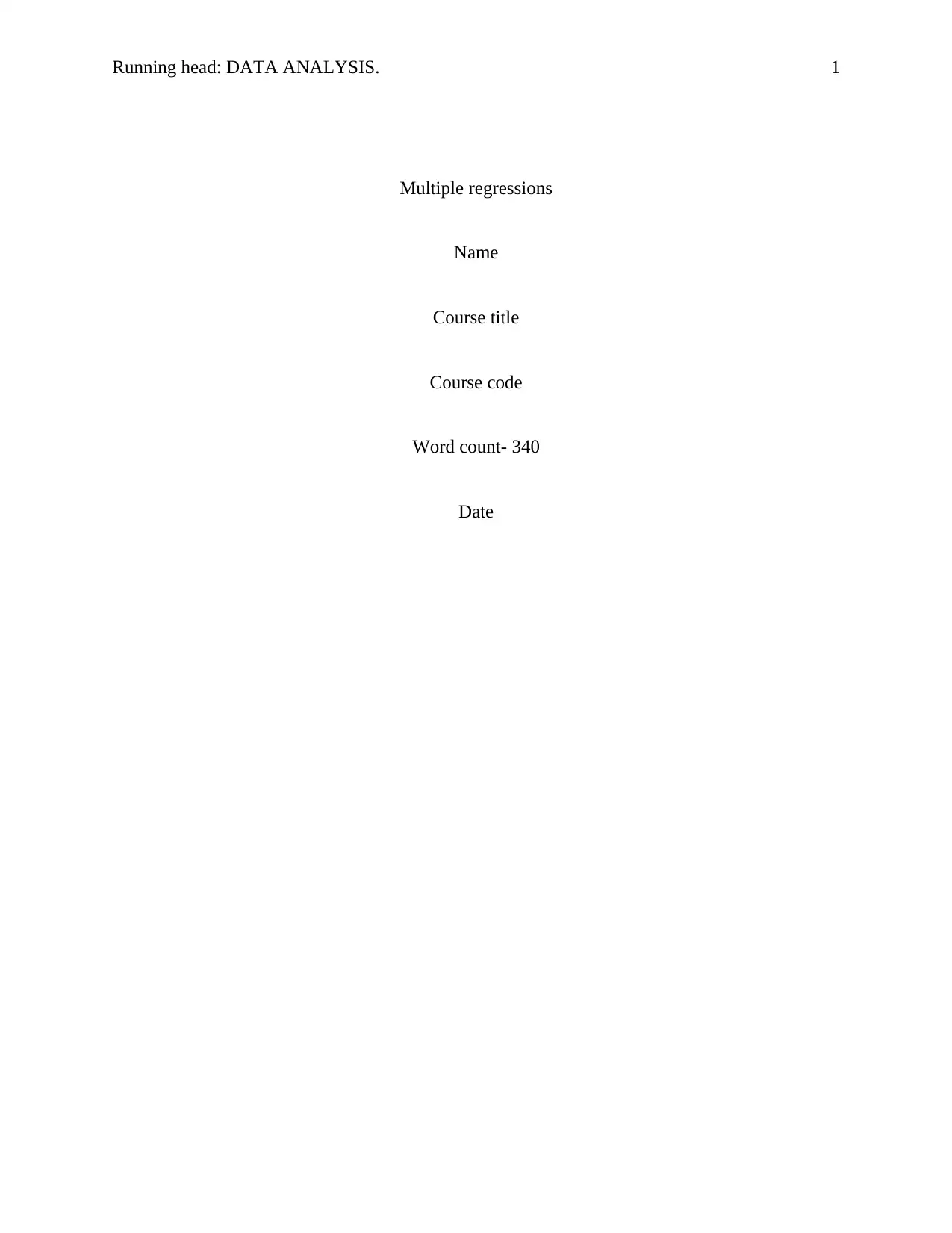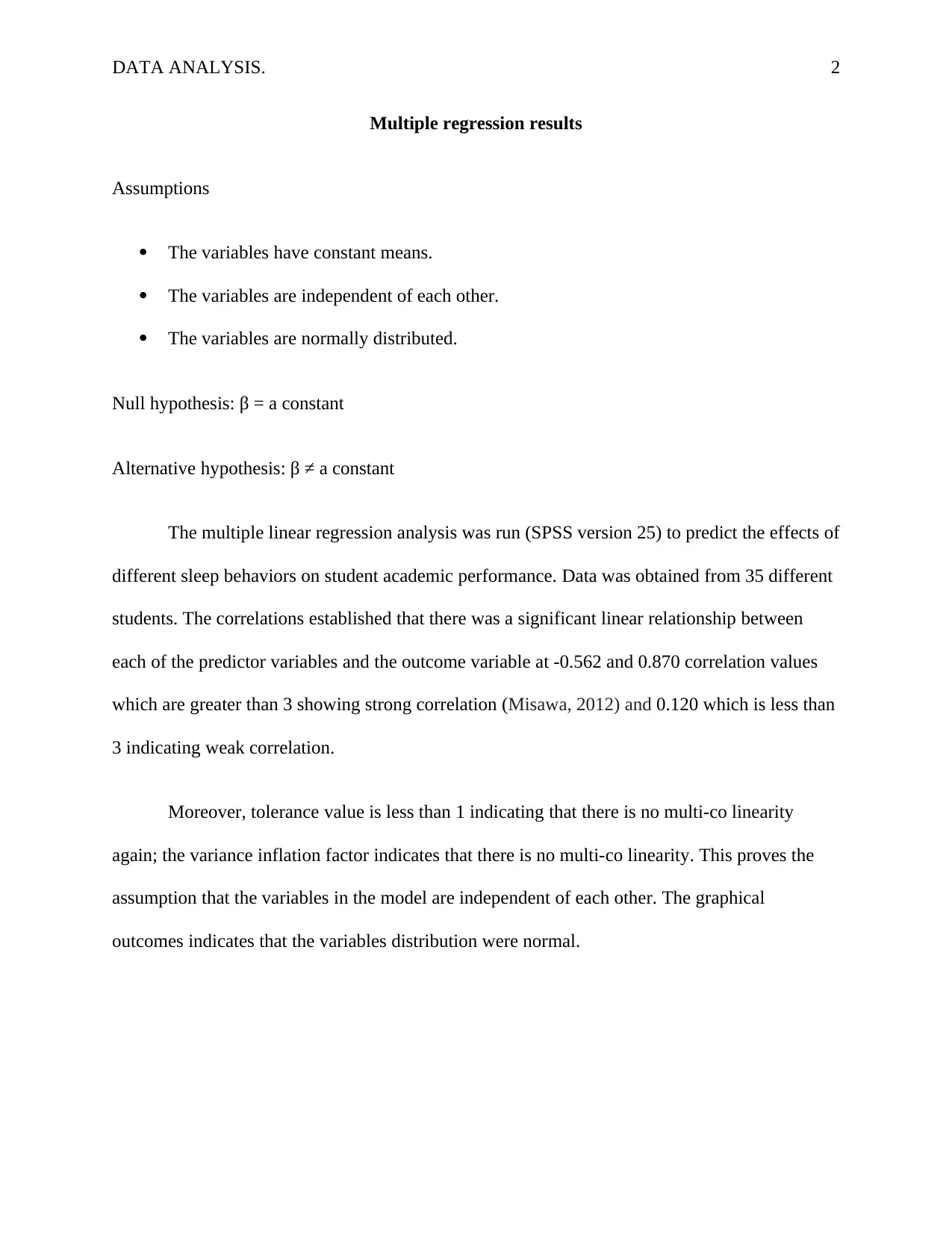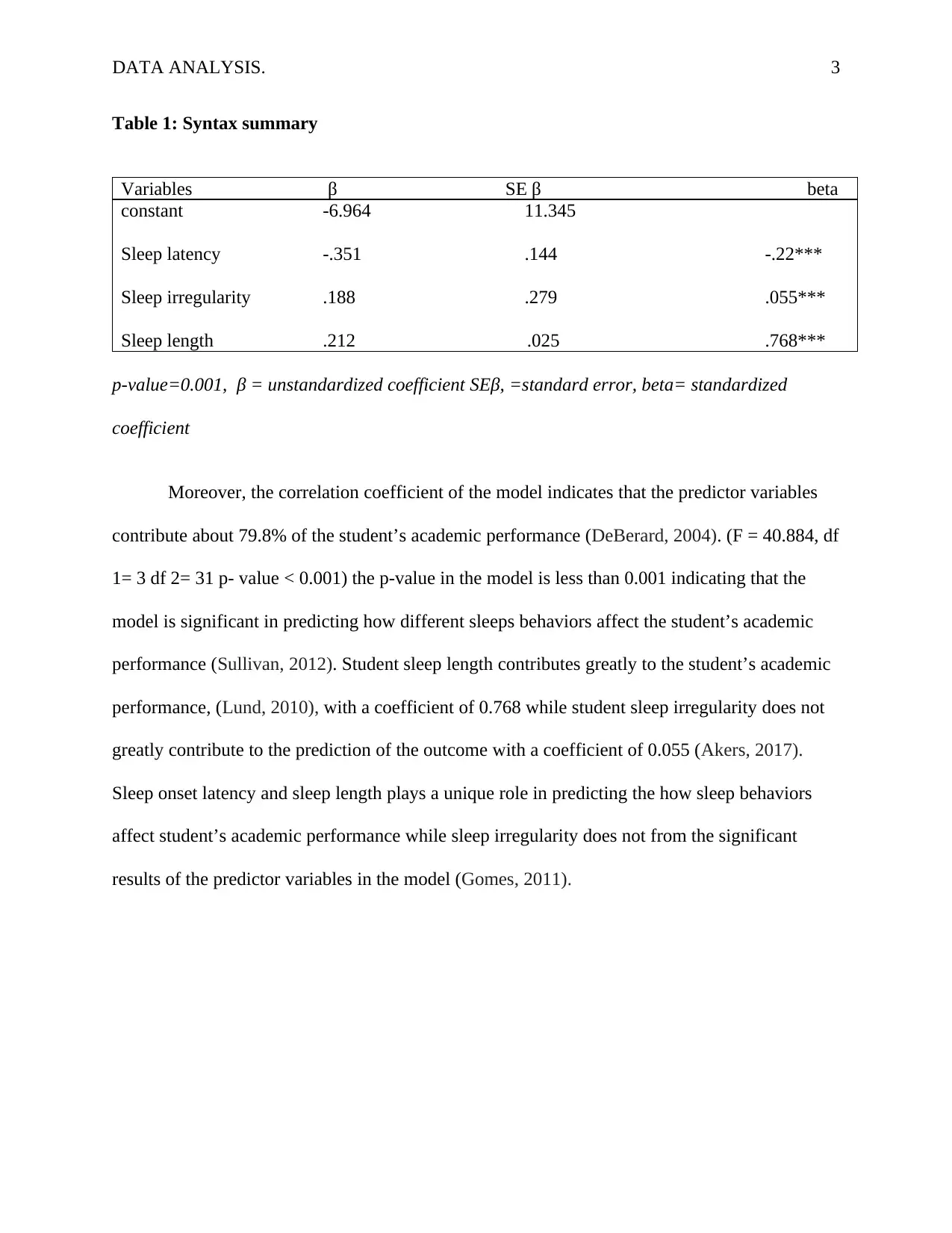Data Analysis Report: Sleep Behaviors, Regression, and Performance
VerifiedAdded on 2023/06/03
|5
|802
|344
Report
AI Summary
This report presents a multiple regression analysis conducted to investigate the relationship between different sleep behaviors and student academic performance. The study involved 35 students, and the analysis aimed to predict how sleep latency, irregularity, and length impact academic outcomes. The results indicate significant correlations between predictor variables and the outcome variable, with tolerance and variance inflation factor values confirming the independence of variables. The regression model explains approximately 79.8% of the variance in student academic performance. The findings highlight that sleep length significantly contributes to academic performance, while sleep irregularity has a less significant impact. The report includes a detailed syntax summary, coefficient values, and p-values to support the conclusions, along with a comprehensive list of references.
1 out of 5












![[object Object]](/_next/static/media/star-bottom.7253800d.svg)